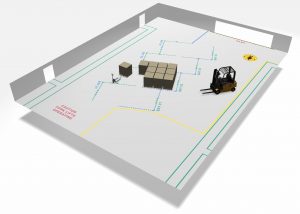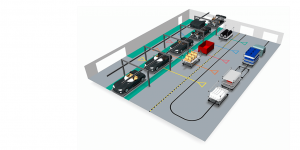Floor Marking for Lean Manufacturing: Optimizing Efficiency and Workflow
PermaStripe
In the world of manufacturing, efficiency is key. Lean manufacturing principles focus on minimizing waste and maximizing productivity, and one often-overlooked aspect of this approach is floor marking. Floor marking plays a crucial role in implementing lean principles within manufacturing facilities by providing visual organization, enhancing safety, and optimizing workflow.
Benefits of Floor Marking in Lean Manufacturing
One of the primary benefits of floor marking in lean manufacturing is visual organization. By strategically placing floor markings, manufacturing facilities can create visual cues for employees, helping them navigate the workspace efficiently. For example, color-coded markings can denote different zones or processes within the facility, making it easier for employees to locate materials or equipment.
Additionally, floor markings enhance safety within the manufacturing environment. They delineate walkways, hazardous areas, and emergency exits, reducing the risk of accidents and injuries. Studies have shown that proper floor markings can significantly reduce the number of workplace accidents, making it a crucial component of any safety program.
Another advantage of floor marking in lean manufacturing is workflow optimization. By indicating where materials, equipment, or finished products should be placed, floor markings streamline workflow and minimize wasted time. This optimized workflow leads to increased productivity and shorter lead times, ultimately contributing to the overall efficiency of the manufacturing process.


Supporting Lean Manufacturing Principles
Floor marking aligns closely with the principles of lean manufacturing, including the 5S methodology and visual management. The 5S methodology—Sort, Set in Order, Shine, Standardize, and Sustain—emphasizes the importance of organization and standardization in the workplace. Floor markings help implement these principles by visually separating and standardizing work areas, making it easier to maintain order and cleanliness.
Moreover, floor marking supports visual management, a key aspect of lean manufacturing that involves using visual cues to communicate information effectively. Floor markings serve as visual indicators of workflow, safety guidelines, and organizational structure, enabling employees to quickly understand and adhere to established processes.
Effective Floor Marking Strategies
To maximize the benefits of floor marking in lean manufacturing, facilities can implement several effective strategies. For example, color-coded floor markings can denote different types of materials or processes, reducing the risk of errors and improving efficiency. Additionally, floor markings can be used to create clear pathways for materials or equipment, minimizing unnecessary movement and streamlining workflow.
Furthermore, facilities can use floor markings to indicate storage locations for materials, tools, or finished products, making it easier for employees to locate and retrieve items as needed. By optimizing the layout of the workspace with strategic floor markings, facilities can minimize waste, improve productivity, and enhance overall efficiency.


Floor marking is a critical component of lean manufacturing, providing visual organization, enhancing safety, and optimizing workflow within manufacturing facilities. By aligning with lean manufacturing principles such as the 5S methodology and visual management, floor marking supports initiatives to minimize waste and maximize efficiency. For expert guidance on floor marking solutions tailored to your specific needs, contact PermaStripe US today.
